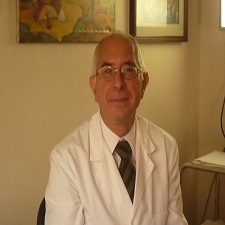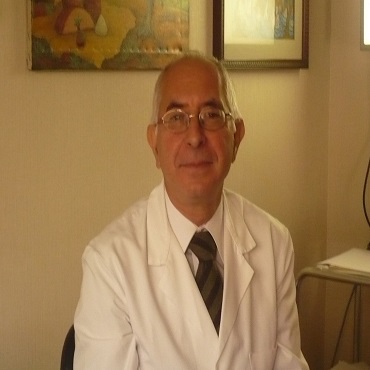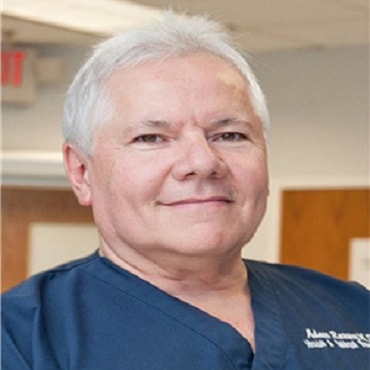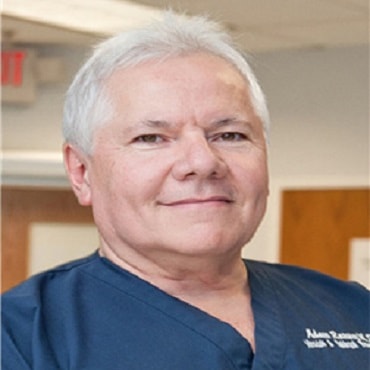Scientific Program
Keynote Session:
Title: Recurrent pregnancy loss (RPL): what we do and what we do not know
Biography:
Ticconi C, graduated in Medicine and Surgery at “La Sapienza” University of Rome. He became specialist in Gynecology and Obstetrics at Tor Vergata University of Rome where currently works as Researcher and Aggregate Professor in Gynecology and Obstetrics. He is author of 221 national and international publications, 78 of which are indexed in Scopus. Main fields of research interest: endocrinology of pregnancy and labor, hCG, implantation, early pregnancy complications, recurrent pregnancy loss. He is reviewer for many relevant journals in Ob/Gyn and is member of the Editorial Board of several Ob/Gyn journals.
Abstract:
Recurrent Pregnancy Loss (RPL), a condition affecting 2-4% of women in reproductive age, is a challenge for modern obstetrics. Indeed, despite extensive investigation has been carried out in this field, defined causes/risk factors for RPL can be detected in only around 50% of women with RPL. The following aspects will be developed on the basis of the current knowledge and of the experience gained by our group on more than 800 managed cases of RPL: 1. Problems of definition; 2. Implantation-related issues with specific application to time-to-pregnancy, eutopic and ectopic pregnancy as well as gestational age of pregnancy loss in women with RPL; 3. Immune contributors to RPL with specific application to autoantibodies; 4. Limitations and possibilities of the current diagnostic workup for RPL; 5. Efficacy of treatments and outcome of subsequent pregnancies in women with RPL; 6. Methodological pitfalls and future directions in research on RPL and in the clinical management of women with RPL.
Title: Creation of the Paradict-O center in orleans to prevent maternal drug toxicity in breastfed neonate
Biography:
Serreau Raphael, started pharmacology in 1997. Upon completion of his doctorate in Pharmacology at the University of Paris V Rene Descartes in 2007 about Risk Management Plan during pregnancy and breastfeeding, Pr Raphal Serreau joined the Center of Clinical Research in Cochin and Necker Hospital in Paris where he directed research combining Perinatology and Pharmacology. (www.premup.org). He worked also in Necker University in EA 3620 “VIH Child-Mother Unit”. In 2012 with Prof Tabassome Simon (St Antoine Hospital, Paris), Prof Robert Barouki (Necker Hospital, Paris) and Jean-Luc Volatier (ANSES, Maisons-Alfort), Prof Serreau obtained a grant for his research fields about contaminants and breast milk. He‘s team got half million euros to do contalait study. 180 women were included in 6 milk banks in France (Lyon, Paris, Lille, Montpellier, Bordeaux and Nantes) during 18 months. Heavy metals, PCB, furans, dioxins and different contaminants were dosed in breast milk. Tuna Fish consumption and dental filling were responsible of high methyl mercury concentrations in breast milk. Contaminants should be assess regularly in lactating women. In 2019 Prof Raphael Serreau became Director of PARADICT-O center in Orleans Metropole and his team reach the EA INSERM Psycomadd in AP-HP 6 University of Paris Saclay (Prof Amine Benyamina).
Abstract:
We studied ibuprofen and ketoprofen, drugs of the class of NSAIDs (profen) at risk during pregnancy. We performed the assays in colostral milk and mature breast milk to verify its compatibility during breastfeeding. The study included 20 breastfeeding mothers, treated orally by a minimum of 3 x 200 mg tablets of ibuprofen in order to reach steady state at least on the 7th day after the delivery. Ibuprofen half-life (t1/2) is previously documented in the literature 114 minutes21. Steady state concentration is achieved when ibuprofen is administered at a constant rate (5 x t1/2 ~ 10 hours), at a minimum of 3 tablets/day of 200 mg ibuprofen.
Women included in our study were among those who seeked information on the compatibility of ibuprofen and breastfeeding by contacting the Medic-Al network. Women below 18 years of age and/or treated by naproxen and/or who have not given their informed written consent were excluded. This study took place from the 1st of January 2011 till the 30th of September 2012.
We want to offer breast milk as a occupationnal medicine health matrix that would be suitable for monitoring the effects of toxins as endocrine disruptors. A network of pharmacologists and perinatology toxicologists should make it possible to optimize the pursuit of knowledge in this still little studied field. For this purpose, the "PARADICT-O" Department of Preventive Medicine was created on January 28, 2018 in Orleans to continue the pharmacological research activities set up with the "Médic-Al" network in Paris.
A PHP Error was encountered
Severity: 8192
Message: trim(): Passing null to parameter #1 ($string) of type string is deprecated
Filename: pastconference/past-program-schedule.php
Line Number: 239
Backtrace:
File: /efsdata/meetingsint-com/application/views/pastconference/past-program-schedule.php
Line: 239
Function: trim
File: /efsdata/meetingsint-com/application/controllers/Pastconference.php
Line: 128
Function: view
File: /efsdata/meetingsint-com/index.php
Line: 317
Function: require_once
Oral Session 1:
- Infertility/Assisted Reproductive Technologies | Gynecological Imaging | Urogynecology | Advancements in Gynecology and Obstetrics | Women Health & Emergency Maternal Care

Chair
Ticconi C
University Tor Vergata, Italy

Co-Chair
Serreau Raphael
Clinical Research Institute, Paradict-O, Orleans, France
Title: Role of IUI: A simple ART in management of infertility in secondary level care
Biography:
Mala Banik has completed her MBBS degree at the age of 25 from Sir Salimullah Medical College and fellowship in Obs. & Gynae. from Bangladesh College of Physicians and Surgeons. She also completed Master of surgery in Obs. & Gynae. in Dhaka University. She is Associate Professor of Gynae. in Sir Salimullah medical college, Dhaka. She has published more than 10 papers in reputed journals and has been serving as an editorial board member of Orion Medical journal. She has special training in Colposcopy and Gynaeoncology.
Abstract:
Method: This cross-sectional prospective observation was performed in a private hospital. Total 433 infertile couples were evaluated and treated during January 2013 to July 2019. Among 433 infertile couples 38 women required IUI which were done in IUI center, Bangladesh Management Infertility center and Green Infertility center Dhaka. All female partners were evaluated by HSG (Hysterosalpingography) or SIS (Saline Infusion Sonography) for tubal patency. Letrozol and injection FSH was given for controlled ovarian hyperstimulation. Injection HCG is given for ovulation induction after formation of mature folicle. IUI was done after 36 hours of injection HCG.
Result: IUI was required in 8.77% of total infertile women attending the hospital. Among the women undergone IUI(38) of age were 25-29 years(47.37%), had secondary infertility (71.05%) and duration of infertility more than 4 years (76.31%). Major causes of infertility were single male factor (42.01%). Prewash semen showed sperm density >20x10^6 (70.83%) and motility <60% (73.68%). Trans-vaginal sonography findings were endometrial thickness before IUI >9mm (60.52%), one mature folicle (62.5%). 7.89% of infertile women conceived after IUI. Among them live birth 2.63%, IUD at term 2.63% due to sever pre-eclampsia and irregular antenatal checkup (2.63%) and spontaneous mid trimester abortion (2.63%).
Conclusion: IUI is a simple ART technique in which the washed sperm is introduced in the uterine cavity at the time of ovulation. If it is performed based on appropriate indication and accurate protocol it will be a convenient method in management of infertility. IUI is easier, safer and inexpensive in comparison with other ART methods.
Title: The role of ultrasonography in the investigation of sub- fertile couples
Biography:
Humaira Islam Khan has achieved her MBBS degree from Dhaka Medical College and Hospital in 1986. She then went on to get her fellowship in ultrasonography from New England Medical Centre Hospitals (Tufts University). She has been serving as a consultant sonologist at Anwer Khan Modern Hospital and Diagnostic Centre for more than 20 years.
Abstract:
The inability to conceive is extremely stressful for sub-fertile couples. Oftener than not, such patients slide into depression, also affecting other members of the family. Ultrasound scanning is radiation-free, less expensive, non-invasive, and hence repeatable to patients with infertility. Almost all abnormalities of the male and female reproductive system is easily detectable.
Infertility is a “disease of the reproductive system defined by the failure to a clinical pregnancy after 12 months or more of regular unprotected sexual intercourse”. We find the use of Ultrasonography extremely rewarding as the first line of investigation in female infertility. The objective of use of USG is to identify causes of abnormalities of uterus, fallopian tubes, ovaries etc. In male patients, ultrasound identifies testicular and epididymal pathologies. It detects varicocele, prostatic and seminal vessels abnormalities.
The investigation of infertility is a multi-disciplinary method. USG scanning of sub-fertile couples follow the stages of identifying causes, formulating treatment plans, responding to emotional needs when treatment fails and monitoring a pregnancy when established. Ultrasonography is used to formulate treatment programs, which open us with follicular tracking and ovulation in both natural and induced cycles. USG is used to monitor the changes of endometrium required for a successful conception. Tubal abnormalities e.g. hydrosalpinx can also be detected. This marks that USG is also used as a diagnostic procedure of fibroids and endometriosis. Therapeutic USG is used for follicular monitoring and interventional USG is used for oocyte retrieval for IVF. Other procedures such as hysterosalpingogram is a popular method to detect tubal pathologies and uterine wall irregularities.
Along with HSG, MRI is also a radiation free procedure for the diagnosis of uterine mass such as adenomyosis and other pathologies. Ultrasonogram along with radiologic and Sono HSG, MRI and blood workup are the screening procedure of the diagnosis, management of causes of infertility and its complications.
Title: Prolapse surgery hysterectomy or not
Biography:
Adam Ramsey is Board Certified with the American Board of OBGYN. He is a Fellow of the American College of OBGYN, a Member of the Royal New Zealand College of OBGYN / Australian College of OBGYN, a Diplomate of OBGYN from Otago University, Dunedin, New Zealand and a Diplomate of Obstetrics with the Royal College of Physicians of Ireland. His deep passion for the field of Urogynecology first began with his Research Fellowship in Urodynamics Studies with patients suffering from Overactive Bladder Syndrome at Massachusetts General Hospital, Harvard Medical School, Boston, Massachusetts, USA in 1983. He is affiliated with the American Urogynecological Society (AUGS), The International Continence Society (ICS), and many other educational bodies. His teaching experience has expanded from his work as a Clinical Tutor from Canberra, Australia to teaching medical students at Sydney University, Australia, teaching the curriculum course of OBGYN and Urogynecology to Medical students at Midwestern University School of Medicine, Downers Grove, Illinois, USA and as an Assistant Professor in the Department of OBGYN at the North Chicago School of Medicine, Rosalind Franklin University, Chicago, Illinois, USA. Currently, He speaks professionally, representing diverse medical industries and presenting in many conferences and clinical meetings around the world.
Abstract:
A PHP Error was encountered
Severity: 8192
Message: trim(): Passing null to parameter #1 ($string) of type string is deprecated
Filename: pastconference/past-program-schedule.php
Line Number: 354
Backtrace:
File: /efsdata/meetingsint-com/application/views/pastconference/past-program-schedule.php
Line: 354
Function: trim
File: /efsdata/meetingsint-com/application/controllers/Pastconference.php
Line: 128
Function: view
File: /efsdata/meetingsint-com/index.php
Line: 317
Function: require_once
Title: Minilaparotomy hysterectomy is an effective option for the treatment of benign uterine pathologies: A comparative study with conventional Pfannenstiel and laparoscopic approaches in developing countries
Biography:
She was born in a respectable Muslim family in 1970. She has completed MBBS from Sylhet M A G Osmani Medical College in 1995. She has completed MCPS (Gynae &Obs) from Bangladesh College of physicians & Surgeons and MS (Gynae & Obs) in 2006 from Bangabandhu Sheikh Mujib Medical University. She is trained in Laparoscopy, Hysteroscopy, Colposcopy & infertility. She has done Fellowship in Minimal Access surgery (FMAS) from India in 2016. And also done Diploma in Assisted Reproductive Technology from India.
Abstract:
Aims and Objectives
To introduce minilaparotomy hysterectomy, a technical modification in the performance of hysterectomy.
To review and compare the results obtained using Pfannenstiel, laparoscopy and minilaparotomy hysterectomy.
Patient and Method
Between February 16 and February 18 one hundred sixteen patients with benign uterine disease requiring hysterectomy underwent minilaparotomy, conventional Pfannenstiel and laparoscopic hysterectomy in Mohammadpur fertility center. A retrospective data analysis was performed. The surgical approach for minilaparotomy procedure was carried out via a 4-5 cm midline transverse incision 1.5 cm above the symphysis pubis. The mean range of patients age was 46 (39-66) yrs.
Result
The minilaparotomy procedure was the fastest procedure with a mean time of 63.4min (range57.85-68.94 min, P<0.001) Hospital stay was shortest in laparoscopic procedure (mean time 2.24 days, range1.86-2.61 days) (P < 0/001). For minilaparotomy hospital stay was (mean time was 3.1 days), average blood loss was least (range 30-50 ml). All patient returns back to work within one week of surgery. The rate of intra operative and post-operative complication were not statistically different among three procedures.
Conclusion
The minilaparotomy hysterectomy is an effective minimally invasive procedure with a low morbidity rate and short hospital stay. The concept can help in learning and performing this procedure easily and safely. It can be performed with the use of simple instruments thereby reducing the expenses. It may well serve as an alternative to the conventional Pfannenstiel or laparoscopic hysterectomy in low resource developing countries.
Title: Laparoscopic evaluation of primary and secondary subfertility
Biography:
Setara Binte Kasem is working as associate professor (Gynae & Obstetrics) in Dhaka Medical College Dhaka, Bangladesh. She passed MBBS in 1990. She has done post-graduation degree DGO, MS from Dhaka University & FCPS degree from Bangladesh College of Physicians & Surgeons in gynae and obstretrics. She has worked in Sir Salimullah Medical College, BSMMU, BIRDEM and in different Government institutions. She is interested in research works & has about 20 National & International publications
Abstract:
Background: Inability to conceive after one year of unprotected regular intercourse are infertility or subfertility. Prevalence of subfertility in industrialized countries has been quoted as 20%, and seems to be on the rise. Infertility can be primary in which the case the woman has never conceived before or secondary when there is prior conception irrespective of the outcome of the pregnancy. Traditional way to assess the uterine cavity, tubal structure and tubal patency was hysterosalphingography but it is now been largely superseded by laparoscopy and hysteroscopy. The objective of this study was to highlight the role of laparoscopy in establishing the diagnosis of primary and secondary female subfertility and different therapeutic procedure done at the study centre.
Method: This study was conducted in Female Subfertility and Reproductive Medicine Unite of Gynae and Obstetrics department of Dhaka Medical College Hospital, Dhaka from January 2015 to June 2018. Total 4256 subfertile patients attended the Infertility OPD. Out of these 215 patients were selected for laparoscopy. Those patients who had contraindication for laparoscopy were excluded from study. Detailed laparoscopic findings were recorded.
Results: Out of 4256 subfertile patients total 215 patients were selected for laparoscopy. 136 (63.26%) patients were in primary subfertility group while 79 (36.74%) patients were in secondary subfertility group. In primary subfertility group(n=136), most common laparoscopic finding was PCO in 44 (32.34%) patients followed by peritubal and periovarian adhesions in 24 (17.65%) patients, Bilateral tubal block in 23(16.91%) patients, Endometriosis in 15(11.03%), Unusal tortuous and lengthy tube in 15(11.03%) patients, fibroid in 11(8.09%) patients, PID, Hydrosalphinx and Tuboovrian mass in 7 (5.15%) patients, severe adhesion of uterus with surrounding structures in 5 (3.68%) cases, Mullerian agenesis and hypoplasia in 3(2.21%) cases, Adenomyosis in 2(1.47%) cases, Genital tuberculosis in 2(1.47%) cases, Streak gonad in 1(0.74%) case. No visible abnormality found in 22( 16.18%) cases, unilateral tubal block present in 25(18.38%) cases, Ovarian cyst present in 12(8.82%) cases.
The commonest finding by laparoscopy in patients with secondary infertility were PCO in 18 (22.78%) patients and peritubal and periovarian adhesions in 18 (22.78%) patients, followed by Bilateral tubal block in 12(15.19%) patients, fibroid uterus in 12(15.19%) patients, Endometriosis in 10(12.66%), unusal tortuous and lengthy tube in 9(11.30%) patients, severe adhesion of uterus with surrounding structures in 7 (8.86%) cases, PID, Hydrosalphinx and Tuboovrian mass in 6 (7.59%) cases, Genital tuberculosis in 3(1.40%) cases, Anenomyosis in 1(1.27%) case. No visible abnormality found in 12( 15.19%) cases, unilateral tubal block present in 15(18.99%) cases, Ovarian cyst present in 14(17.72%) cases.
Various laparoscopic procedure done at the same sitting like Ovarian drilling done in 39(28.68%) patients in primary infertility and 13(16.46%) patientts in secondary subfertile group . Adhesiolysis done in 12(8.82%) patients in primary and 10(12.66%) patients in secondary infertile group. Ovarian cystectomy done in 14(10.29%) patients of primary and 9(11.39%) patients of secondary group. Cyst puncture done in 3(2.21%) and 4(5.06%) patients respectively. Salphingostomy done in 4(2.94%) primary subfertile patient and 1(1.27%) in secondary subfertile patient. Myomectomy done in 2(1.47%) primary subfertile patient. Laparotomy followed by myomectomy done in 4(2.94%) patients in primary and 3(3.80%) patients in secondary infertility group. Laparoscopy followed by laparotomy for ovarian cystectomy, unilateral salphingooophorectomy done in 3(2.21%) primary and 2(2.53%) secondary subfertile women.
A PHP Error was encountered
Severity: 8192
Message: trim(): Passing null to parameter #1 ($string) of type string is deprecated
Filename: pastconference/past-program-schedule.php
Line Number: 354
Backtrace:
File: /efsdata/meetingsint-com/application/views/pastconference/past-program-schedule.php
Line: 354
Function: trim
File: /efsdata/meetingsint-com/application/controllers/Pastconference.php
Line: 128
Function: view
File: /efsdata/meetingsint-com/index.php
Line: 317
Function: require_once
Title: Maternal and perinatal outcome in gestational diabetes mellitus compared to pregestational diabetes mellitus
Biography:
Mustary F has completed her MS in Gynaecology& Obstetrics under Dhaka University. Now she is an Associate consultant, Gynae&Obs,in National Healthcare Network, Bangladesh Diabetic Association.She is certified in Diabetology(CCD, Birdem), trained in infertility management and IUI. She also trained in colposcopy and cervical pathology. She has published two papers in reputed BIRDEM Medical Journals (Vol-9) andone paper in Bangladesh Journal of obstetrics &Gynaecology (Vol-33). She hasbeen serving as a member of OGSB (obsgynaesociety Bangladesh). Musty, was invited as a speaker and presented an article at 3rd international Conference on Gynaecology and obstetrics in June, 2019, Osaka, Japan, which has been published in supporting Journal “Andrology&Gynaecology : Current Research.” (ISSN: 2327 – 4360)
Abstract:
Background: Diabetes mellitus is the most frequently encountered endocrine disorder in pregnancy and is associated with adverse outcomes if remain undiagnosed or untreated.This study was done to compare the maternal and perinatal outcome of pregestational diabetes mellitus (PGDM) with that of gestational diabetes (GDM).
Methods: This observational analytical study with group comparison was carried out in the Department of Obstetrics and Gynecology, BIRDEM General Hospital, Dhaka from July 2015 to June 2016. This study was conducted on two groups of pregnant women: group A (PGDM) and group B (GDM). A total of 100 cases were selected and in each group 50 pregnant women were enrolled. Singleton pregnancy and age 18 to 45 years were included. Pregnancy with hypertension, heart disease, renal disease and other metabolic disorders were excluded.
Results: In this study mean gestational age of the study subjects were 35.72 ± 2.61 weeks and 36.58 ± 2.34 weeks in PGDM and GDM groups. History of GDM [34.0% vs 16.0%], intrauterine death (IUD) [14.0% vs 2.0%] and abortion [22.0% vs 6.0%] were significantly higher among PGDM patients than GDM patients. Regarding present pregnancy complications, polyhydramnios [32.0% vs 14.0%], preterm delivery [38.0% vs 20.0%],vulvovaginitis [28.0% vs 12.0%] and premature rupture of membrane (PROM) [24.0%vs8.0%] were significantly higher in PGDM than GDM patients. Wound infection was significantly high in PGDM groups [35.7%vs 11.1%] among the patients delivered by lower uterine Cesarean section (LUCS). Regarding perinatal complications, hypoglycemia [22.0% vs 8.0%],birth asphyxia [24.0% vs 8.0%], RDS [24.0% vs 8.0%], were significantly higher among PGDM comparing GDM patients.
Conclusion: The maternal and perinatal outcomes of pregestational diabetes mellitus were less favorable than those of gestational diabetes mellitus.
A PHP Error was encountered
Severity: 8192
Message: trim(): Passing null to parameter #1 ($string) of type string is deprecated
Filename: pastconference/past-program-schedule.php
Line Number: 354
Backtrace:
File: /efsdata/meetingsint-com/application/views/pastconference/past-program-schedule.php
Line: 354
Function: trim
File: /efsdata/meetingsint-com/application/controllers/Pastconference.php
Line: 128
Function: view
File: /efsdata/meetingsint-com/index.php
Line: 317
Function: require_once
Title: A rare shape of placenta; placenta bipartite, bilobata, dimidiate, duplex: A rare case report
Biography:
Dr. Pratima Rani Biswas has completed his MBBS at the age of 25 years from Sir Salimullah Medical College under Dhaka University and Postgraduate MS (Gynae & Obs ) from Sir Salimullah Medical College under Dhaka University, Bangladesh. She is the Junior Consultant (Gynae & Obs ), Railway General Hospital Dhaka. Bangladesg. She has published more than 03 papers in reputed journals
Abstract:
Placenta bipartite is a rare Variation of placental morphology. 2 The estimated Placenta bipartite is a rare Variation of placental morphology. 2 The estimated incident is up to 2-8 % of pregnancy. There is no distinct racial, ethnic or geographical predilection observed. The diagnosis of an anomalous placenta is important for patient management at time of delivery. Specifically, the bilobed placenta can be associated with first-trimester bleeding, polyhydramnios, abruption, and retained placenta. Careful attention to the cord insertion is also required for optimal fetal management. We report a case of a 24 years multi gravida with previous history of 2 c/s who had regular antenatal checkup and her pregnancy was uneventful till 36 wks. Her early USG at 16 wks showed low lying placenta little away from the OS. She was advised to take complete bed rest, avoid journey and coitus. Couple was warned about pervaginal bleeding which may occur any time and also advised to ready at least four blood donars. Her 2nd USG scan at 26wks showed placenta bipartite and insertion of cord over the OS. Patient was treated conservatively and dose of inj. Oradaxon was completed at 32wks for lung maturation. At 36 wks, patient perceived less foetal movement and then emergency LUCS with BLTL was done. Baby was ok and her postpartum period was uneventful
A PHP Error was encountered
Severity: 8192
Message: trim(): Passing null to parameter #1 ($string) of type string is deprecated
Filename: pastconference/past-program-schedule.php
Line Number: 354
Backtrace:
File: /efsdata/meetingsint-com/application/views/pastconference/past-program-schedule.php
Line: 354
Function: trim
File: /efsdata/meetingsint-com/application/controllers/Pastconference.php
Line: 128
Function: view
File: /efsdata/meetingsint-com/index.php
Line: 317
Function: require_once
Title: Medical management of missed abortion using a combination of mifepristone and misoprostol
Biography:
Dr Maherunnessa has completed FCPS from Bangladesh College of Physicians & Surgeons (BCPS) in 2003. She is currently employed as an Associate Professor of Gynaecology & Obstetrics at BIRDEM, Dhaka. She has published 14 papers in different journals.
Abstract:
A total 110 cases of missed abortion up to 13 weeks were included in this study. Each woman received a single oral dose of tab mifepristone 200 mg and 48 hours later Tab misoprostol 400 µgm was used vaginally 3hourly 3times for termination of pregnancy. Maximum 1200 µgm Tab misoprostol were used. Women who failed to pass the products of conception were offered repeat medical regime with Tab misoprostol. Success was defined as complete uterine evacuation within 3 days, without the need for surgical evacuation. In this study the overall success rate of medical management was 84.54% (93 out of 110). Mifepristone alone induced natural expulsion of products conception was 18 %( 20 out of 110) of women .The median dose of misoprostol was 1200 µgm and the median induction miscarriage interval after prostaglandin administration was 8.04 hours (range: 0.58- 50.54 h).Of the 17 women who had surgical evacuation, 4 required an emergency curettage for bleeding.
In conclusion, the combination oral mifepristone 200 mg with vaginal application of misoprostol is an alternative to surgical management of early fetal demise, although it is not as effective as surgery. So it may reduce the need for surgical intervention
A PHP Error was encountered
Severity: 8192
Message: trim(): Passing null to parameter #1 ($string) of type string is deprecated
Filename: pastconference/past-program-schedule.php
Line Number: 354
Backtrace:
File: /efsdata/meetingsint-com/application/views/pastconference/past-program-schedule.php
Line: 354
Function: trim
File: /efsdata/meetingsint-com/application/controllers/Pastconference.php
Line: 128
Function: view
File: /efsdata/meetingsint-com/index.php
Line: 317
Function: require_once
Title: Anesthetic management of a patient with cancer and hyperhomocysteinemia
Biography:
Cindy Yeoh received her Medical Degree from Washington University School of Medicine in St. Louis, USA. She completed 4 years of General Surgery residency before entering a residency in Anesthesiology at St. Vincent’s Hospital/New York Medical College, USA. She currently practices at Memorial Sloan Kettering Cancer Center in New York. She is part of the Quality Assurance Committee and chairs the RISQ committee (Reporting to Improve Safety and Quality).
Abstract:
Causes of hyperhomocysteinemia include genetic predisposition, acquired deficiencies (folate, B6, B12), malignancies, and renal disease. Elevated homocysteine levels result in thromboembolic complications by causing endothelial dysfunction, increasing procoagulant activity, and decreasing antithrombotic effect.
Challenges of patients with hyperhomocysteinemia undergoing anesthesia are related mainly to the procoagulant state and efforts should be focused on thromboprophylaxis and maintenance of hemodynamics and euvolemia. Nitrous oxide should be avoided as it inhibits methionine synthase and can further increase homocysteine levels. Patients with co-morbidities that include coronary artery disease, peripheral vascular disease, and cerebrovascular disease are at increased risk for peri-operative thrombotic events. This risk is amplified for high-risk procedures under general anesthesia.
Title: Effect of basil leaves extract on liver fibrosis induced by thioacetamide in male rats
Biography:
Mohammed Yahya Alomar is working as a Professor at King Abdul Aziz University-Saudi Arabia, Jeddah. He completed his Master of Science in Animal Physiology
Abstract:
Background and Objective: Liver fibrosis is one of the most common chronic diseases worldwide. The current medical therapy of hepatic disorders is ineffective and till now there is no any therapy has successfully prevented the liver diseases and disorders. The present study aimed to investigate the effect of basil leaves extract on liver fibrosis induced by thioacetamide (TAA) in male rats. Materials and Methods: About 40 rats were randomly divided into four experimental groups. Rats of group 1 were served as controls. Rats of group 2 were given 300 mg kgG1 body weight of TAA by intraperitoneal injection, twice weekly. Rats of group 3 were orally supplemented with basil leaves extract at a dose of 300 mg kgG1 body weight/day. Moreover, they were intraperitoneally injected with TAA at the same dose given to group 2. Rats of group 4 were orally supplemented with basil leaves extract at same dose given to group 3. After 6 weeks of treatment, the blood samples and liver tissues were subjected to biochemical and histopathological evaluations. Results: Group 2 showed significantly increases of serum alanine aminotransferase, aspartate aminotransferase, alkaline phosphatase, gamma glutamyl transferase and total bilirubin. Significant decreases in the levels of liver glutathione and superoxide dismutase were observed in rats treated with TAA and basil leaves extract plus TAA. Noticeably decrease of liver catalase was observed in TAA treated rats. Malondialdehyde levels in liver were significantly increased in TAA and basil leaves extract plus TAA treated rats compared with control rats. In rats exposed to only TAA, liver sections showed an abnormal morphology characterized by noticeable fibrosis with extracellular matrix collagen contents and damage of liver cells structure. Administration of basil leaves extract to rats exposed to TAA led to inhibition of biochemical and histopathological alterations. Conclusion: These results confirmed that the protective role of basil leaves extract attributed to its antioxidant effects. Additionally, the obtained results clarify that the basil leaves extract is a potential protective natural therapy against liver fibrosis induced by exposure to TAA.
Title: Contribution of maternal overweight and obesity to the occurrence of adverse pregnancy outcomes
Biography:
Dr Jhuma Biswas is working as a consultant gynaecologist and obstetrician since 2015. She is the youngest fellow in Bangladesh. And completed MCPS and FCPS from Bangladesh College of physician and surgeon (BCPS) and recently completed MRCOG from Royal college of Obstetrics and Gynaecology.
Abstract:
Background: Obesity is a growing problem all over the world and it may have important impact on pregnancy. Alarming reports state that two-thirds of adults in world-wide are overweight or obese, with half of them in the latter category and the rate obese pregnant women is estimated at 18-36%. Obesity related reproductive complications range from infertility to a wide spectrum of disease such as hypertensive disorders, coagulopathies, gestational diabetes mellitus and fetal complications such as large-for-gestational age infant, congenital malformations, still birth and shoulder dystocia.
Objective: To determine effect of maternal pre-pregnancy obesity on pregnancy outcomes.
Methods: 100 women were recruited in the study. The patients were allocated in to two groups. Group 1 obese patients (50) BMI 30 or more and group 2 (50) non-obese patients BMI between19.4-24.9.
Results: Maternal overweight and obesity were associated with increased risk of gestational diabetes mellitus (GDM), pre-eclampsia, cesarean delivery, pre-term delivery (PTB), large for gestational age (LGA), and admission to the special care nursery or neonatal intensive care unit (SCN/NICU). The estimated proportion of adverse outcomes attributed to overweight and obesity in pre-pregnancy are 12% for GDM, 36% for pre-eclampsia, 58% for cesarean delivery, 6% for preterm labour, 38% for LGA and 6% for SCN/NICU admission.
Conclusion: Maternal overweight and obesity contribute to a large proportion of obstetric complications and adverse outcomes. So, they should be considered as high risk and counselled accordingly.













